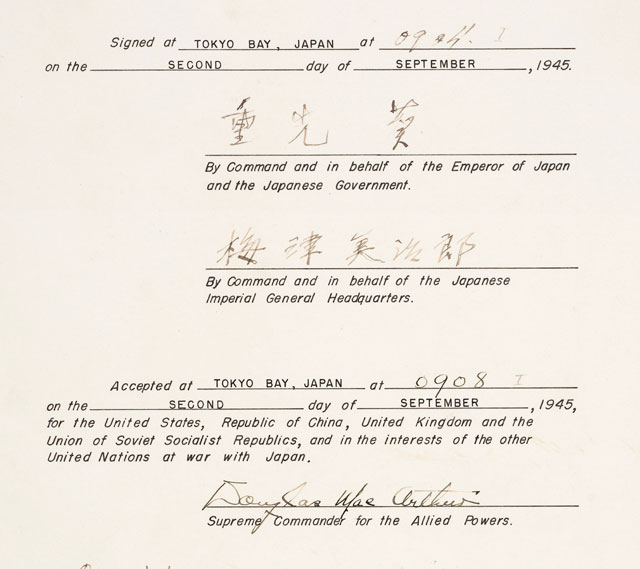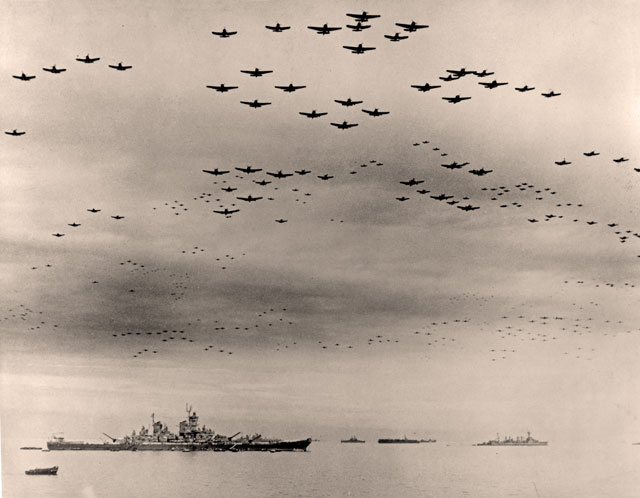The sights and sounds of V-J Day
September 2, 1945: Japan's formal surrender ends World War II

The end of World War II came twice: once with the announced surrender of Japan on August 14, 1945, and again on September 2, with the signing of the Instrument of Surrender aboard the USS Missouri in Tokyo Bay. Both the spontaneous eruption of joy in August and the deeply formal ceremonies two weeks later were critical moments in the conclusion of four years of death, deprivation, fear, and uncertainty that began, for Americans, on December 7, 1941, with the Japanese attack on Pearl Harbor. Both have come to be known as V-J (Victory over Japan) Day, with the United States recognizing September 2 as the official date.
The end of the war came with the beginning of the atomic era, the demonstration that humans—and the United States of America, in particular—now had the power to wreak destruction on a previously unimaginable scale.
The White House statement following the obliteration of Hiroshima on August 6, 1945, came with the threat of further nuclear attacks. And on August 8, the United States detonated a second nuclear weapon over Nagasaki.
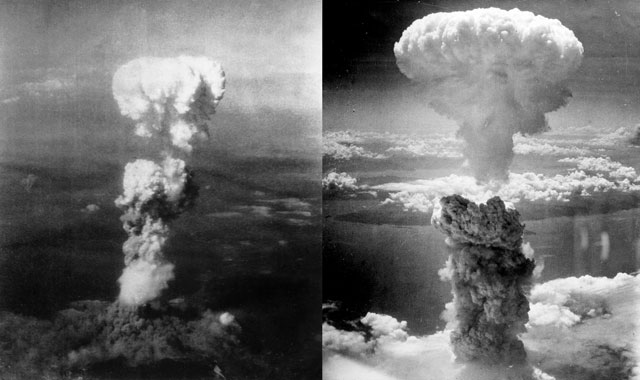
Then the Allies waited. The Mutual Broadcasting System's Gabriel Heatter discussed the possibility of Japan's surrender.
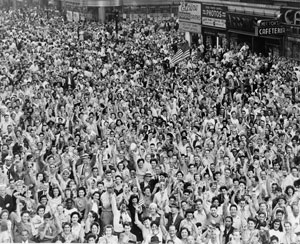
Finally, on August 14, the White House announced that Japan had accepted the terms of unconditional surrender, and noted commentator H. V. Kaltenborn of NBC responded to the conclusion of the Second World War.
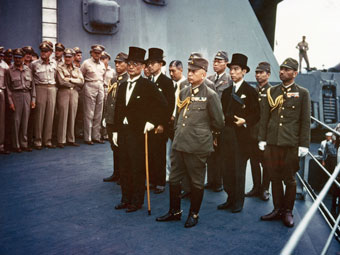
The formal end of the war took place in a ceremony aboard the USS Missouri, during which representatives from each of the Allied countries stepped forward to sign the surrender. Commentators called it “one of the most momentous surrenders in the history of the world." As an armada of airplanes flew overhead, Americans knew what had transpired: The war was finally over.
